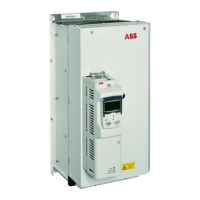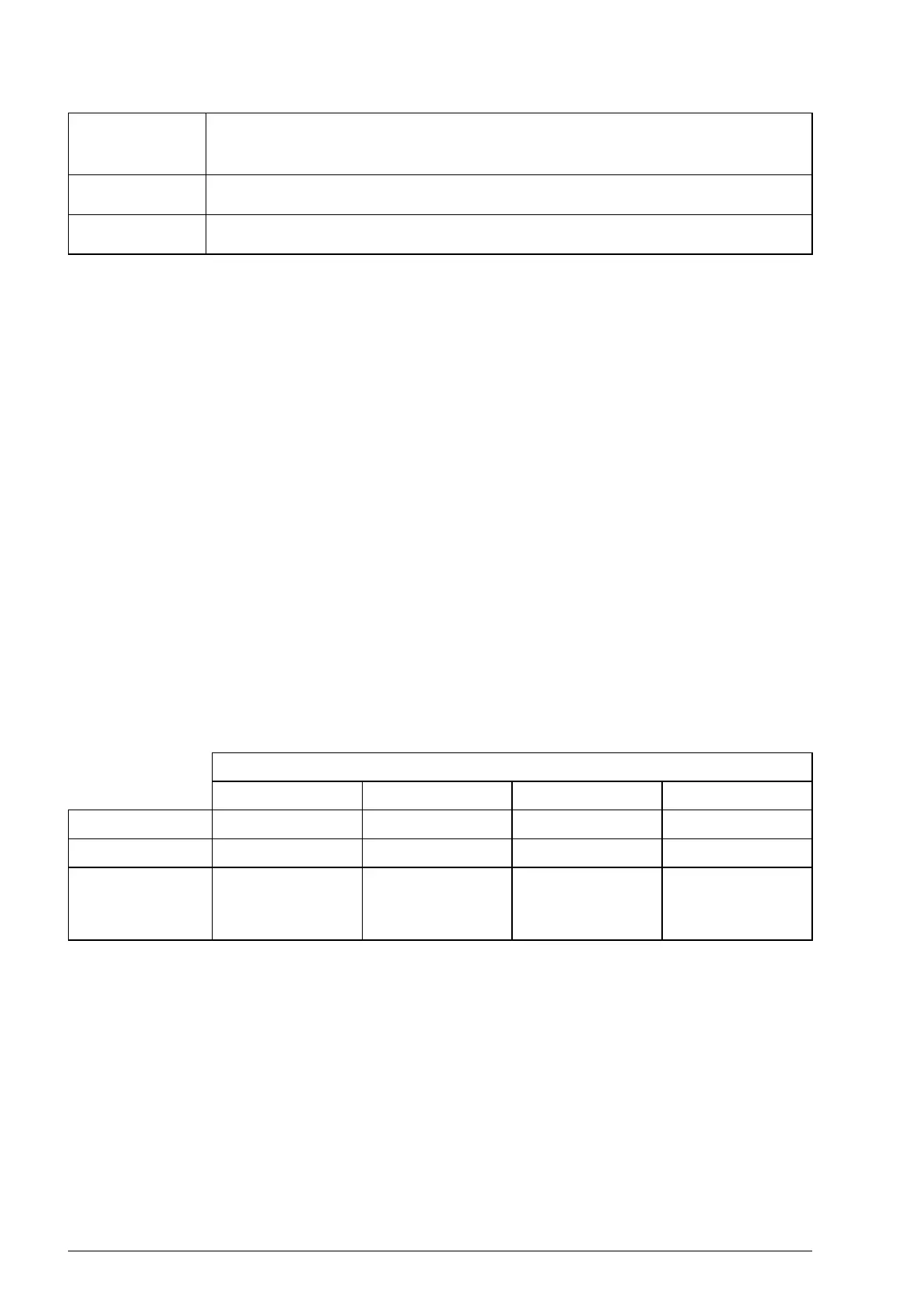264 Additional parameter data
Fieldbus equivalents
Serial communication data between the fieldbus adapter and the drive is transferred
in integer format. Thus, the drive actual and reference signal values must be scaled
to 16/32-bit integer values. The fieldbus equivalent defines the scaling between the
signal value and the integer used in serial communication.
All the read and sent values are limited to 16/32 bits.
Example: If 24.03 Maximum torq ref is set from an external control system, an integer
value of 10 corresponds to 1%.
Pointer parameter format in fieldbus communication
Value and bit pointer parameters are transferred between the fieldbus and drive as
32-bit integer values.
32-bit integer value pointers
When a value pointer parameter is connected to the value of another parameter, the
format is as follows:
For example, the value that should be written into parameter 33.02 Superv1 act to
change its value to 01.07 Dc-voltage is
0100 0000 0000 0000 0000 0001 0000 0111 = 1073742087 (32-bit integer).
Type Data type. See enum, INT32, Bit pointer, Val pointer, Pb, REAL, REAL24,
UINT32.
UINT32 32-bit unsigned integer value.
Val pointer Value pointer. Points to the value of another parameter.
Bit
30…31 16…29 8…15 0…7
Name Source type Not in use Group Index
Value 1 - 1…255 1…255
Description Value pointer is
connected to
parameter
- Group of source
parameter
Index of source
parameter

